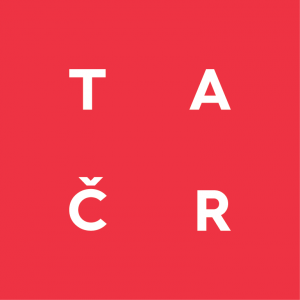| Název projektu: | DAMiAS – Datově řízená správa zařízení v automobilovém průmyslu založená na sémantickém modelování |
| Registrační číslo: | TF04000054 |
| Poskytovatel: | Technologická agentura České republiky |
| Program / výzva: | DELTA 4 (STA02018TF040) |
| Doba řešení: | 01/2018 – 12/2019 |
| Celkový rozpočet: | Projekt celkem: 13 535 000 Kč, Výše podpory: 9 982 000 Kč CIIRC ČVUT: 5 807 200 Kč |
| Hlavní řešitel za CIIRC ČVUT: | Ing. Pavel Burget, Ph.D. |
| Hlavní účastník: | Factorio Solutions, s.r.o. |
| Hlavní výsledky: | Software: The analysis of records of discrete events Sematic models and their integration |
Anotace:
Cílem projektu je vývoj sady metodických a technických řešení za účelem zavedení datově řízené správy zařízení (Asset Management) pro výrobní společnosti v oblasti automobilového průmyslu. Přínos tohoto metodologického a technického řešení spočívá v tom, že společnosti v tomto typu průmyslu, kde se snaží co nejvíce snižovat náklady, mohou provozovat výrobní systémy a linky mnohem efektivněji než dosud. Dalším cílem projektu je navrhnout a realizovat modely používaných systémů na různých úrovních – komunikační, aplikační, výrobní a využít je k diagnostice a prediktivní údržbě. Modely budou realizovány na společné cloudové platformě, která poskytne prostor pro sběr a analýzu dat z výrobních procesů. Spolupráce partnerů v konsorciu navíc umožní výrazně zvýšit rozsah nabízeného řešení.
Projekt výzkumu a vývoje řešený v programu DELTA je realizován v letech 2018 – 2019 se státní podporou 9 982 tis. Kč a zaměřením na oblast Computer sciences, information science, bioinformathics.
Výsledky projektu:
The analysis is based on the search for a pattern of data obtained from a production process record, with data representing discrete events such as product creation, machine startup, processing error, etc. It is assumed that individual machines are involved in the production process (assets) and that the data obtained comes from many consecutive production runs. Realized result enables to search in the data frequent repeating patterns on individual machines. The patterns are subsequently hierarchically assigned across machine groups. As a result, information can beobtained from the data on which machines are involved in a single operation without any knowledge of the structure of the production line and the production process. The advantage of the algorithm is its linear complexity with respect to the length of the input sequence. The analysis results in a set of identified partial sequences. These are the sequences that have the highest score during detection, which is typically the coverage of the input sequence and the frequency of occurrence. Such sequences represent individual manufacturing or assembly recipes / manufacturing processes. Each sequence, or identified process, is described by statistical distribution and characteristics such as the mean duration value, the duration variance, and the start time variance of the sequence relative to the beginning of the entire production cycle. Based on these statistical parameters, it is possible to look for anomalies in the data, which may indicate an emerging or already existing error in the production process.
Created SW module enables to obtain data from superior ontology and thanks to complex querying in SPARQL and creation of ontological concept instances with concrete cases new assets and data logs can be modeled. The proposed superior ontology integrates several models – an asset model, a process log model and a production process model for a given product. The knowledge gained from the individual parts of the model can be connected through the semantic links between the corresponding entities. The software module built uses the Apache Jena Ontology API open library, which is widely used in the ontology science community. The module works with information about products coming from the ERP system and maps the assets and logs to each other.



